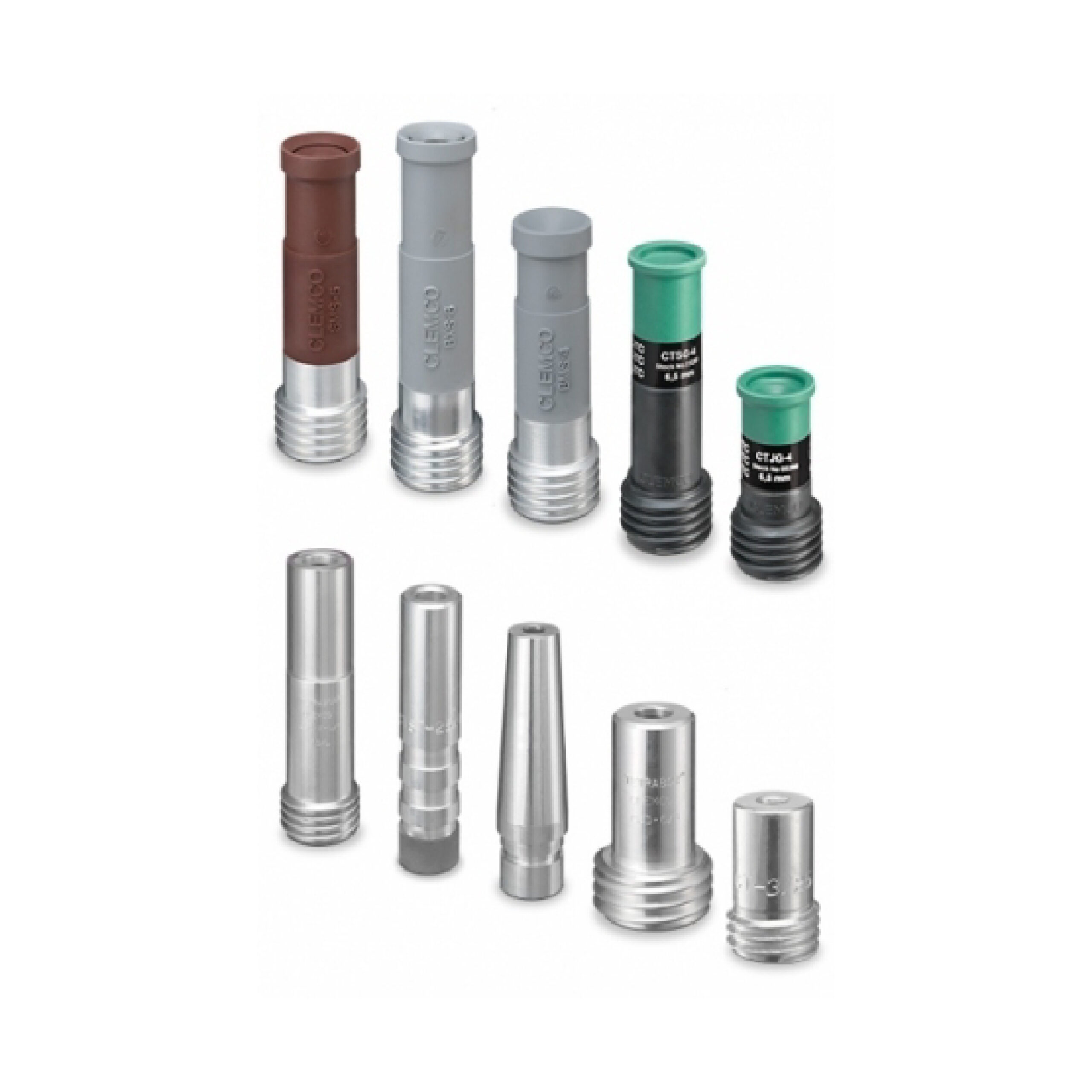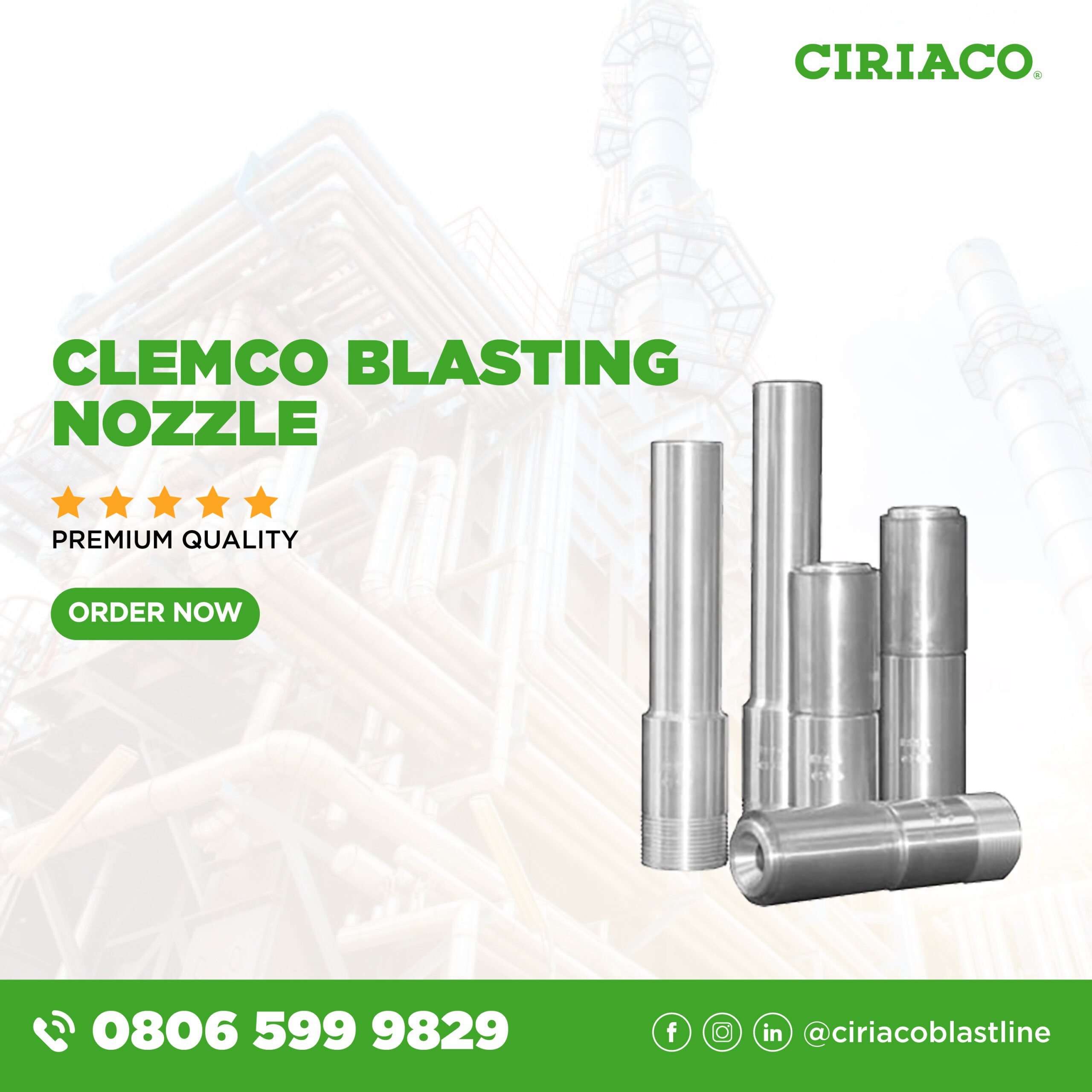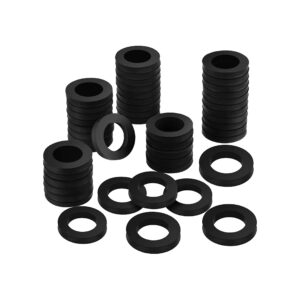Description
When selecting the right nozzle, please note the following points:
Nozzle size (Ø): In addition to the area to be blasted, the choice of nozzle size must also be based on the compressed air available from the compressor. Depending on the available air, the largest nozzle possible should be used, as this also achieves the greatest possible coverage at the same time. This is crucial for economical work in terms of labour costs, blast media costs, compressor costs, and costs for set-up time.
It should also be taken into account, however, that nozzles erode over time due to wear, increasing the nozzle diameter, which also then requires more compressed air at the same time. Therefore, the user should inspect the nozzle diameter regularly (e.g. with a drill bit with the appropriate diameter) and the nozzle should be replaced if necessary. If this is not done, the compressor may not produce the required power, and the nozzle will lose its effectiveness.
Nozzle length: In addition to the available space, as in the example of angled constructions, the length of the nozzle is determined by the type of surface to be cleaned. A longer nozzle should be selected for surfaces that are hard to clean. The extended nozzle length produces a Venturi effect, allowing the nozzle to achieve more power. The Venturi effect is produced by a narrowing of the nozzle, which increases the speed of the blast media/air mixture. Because of their shorter construction, small nozzles can create this effect only to a limited extent or not at all. For this reason, they are more suitable for cleaning structures that require blasting with greater pinpoint precision.
Material: In order to provide high-quality sandblasting nozzles, Clemco nozzles are generally made of several different materials. We offer nozzles with an aluminium jacket as well as nozzles with a rubber jacket. The question here has to do with where the nozzle is used. The nozzle with an aluminium jacket is the tougher version. But the more impact-resistant nozzle, as in cases of frequent falls or bumping during construction, for example, is the nozzle with a rubber jacket.
The determining factor in the selection of the right nozzle is certainly the choice of the right nozzle liner. At Clemco, we essentially distinguish among three different liners:
- Tungsten carbide: This material is very tough and abrasion-resistant, and as such is the most resistant to impact. Therefore it is especially suitable for use on construction sites where the nozzle is also subject to frequent impacts, for example.
- Silicon carbide: Silicon carbide provides a good mixture of impact and abrasion resistance. This material is more abrasion-resistant than tungsten carbide, but on the other hand, is more sensitive to impacts. Therefore, nozzles with silicon carbide liners are good all-round nozzles for everyday use in different places and with different blast media.
- Boron carbide: This material is extremely abrasion-resistant and thus is especially durable. Therefore it is particularly suitable for extremely sharp-edged and/or aggressive blast media like corundum and garnet, as well as for multiple-shift operations and daily use. But it is somewhat more sensitive to impacts and thus suitable for stationary applications.
In general, however, these are just rough guidelines and every user must find the right liner for his work and the right price-performance ratio for himself. Apart from the structure of the nozzle, the handling of the nozzle also plays a determining role in the durability, and thus of the economic success of the blasting work.






















